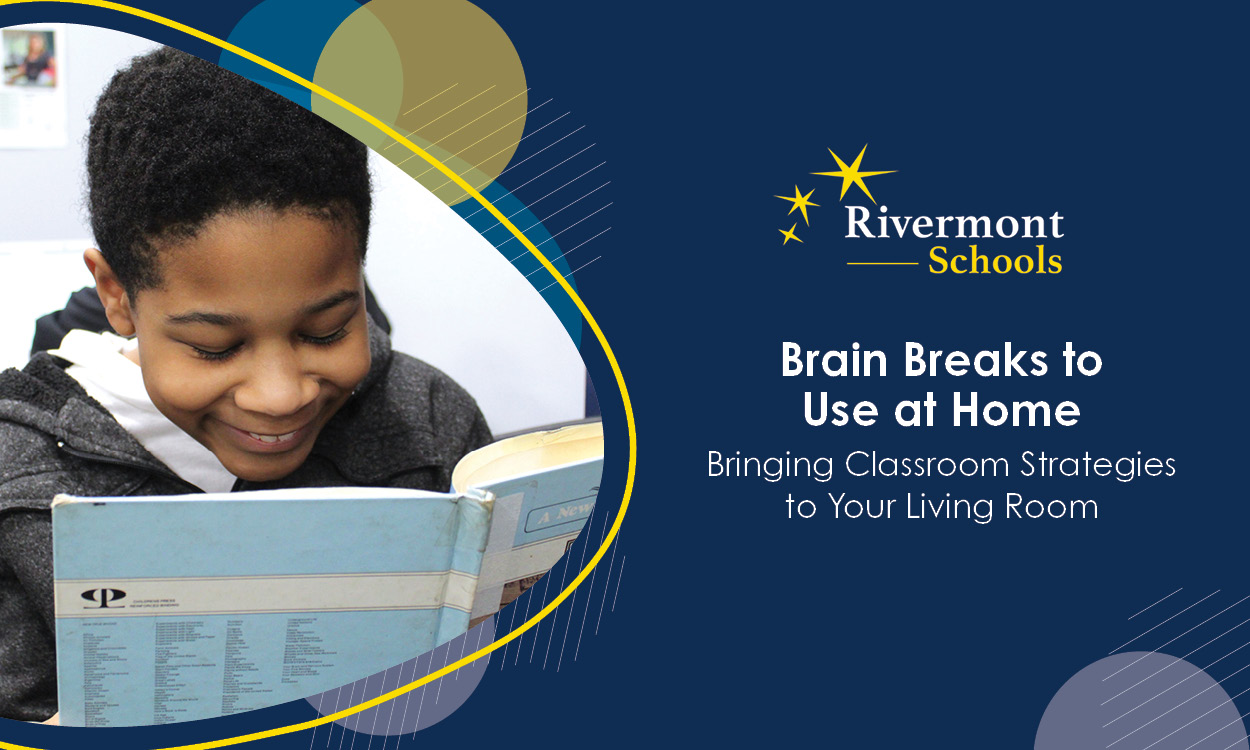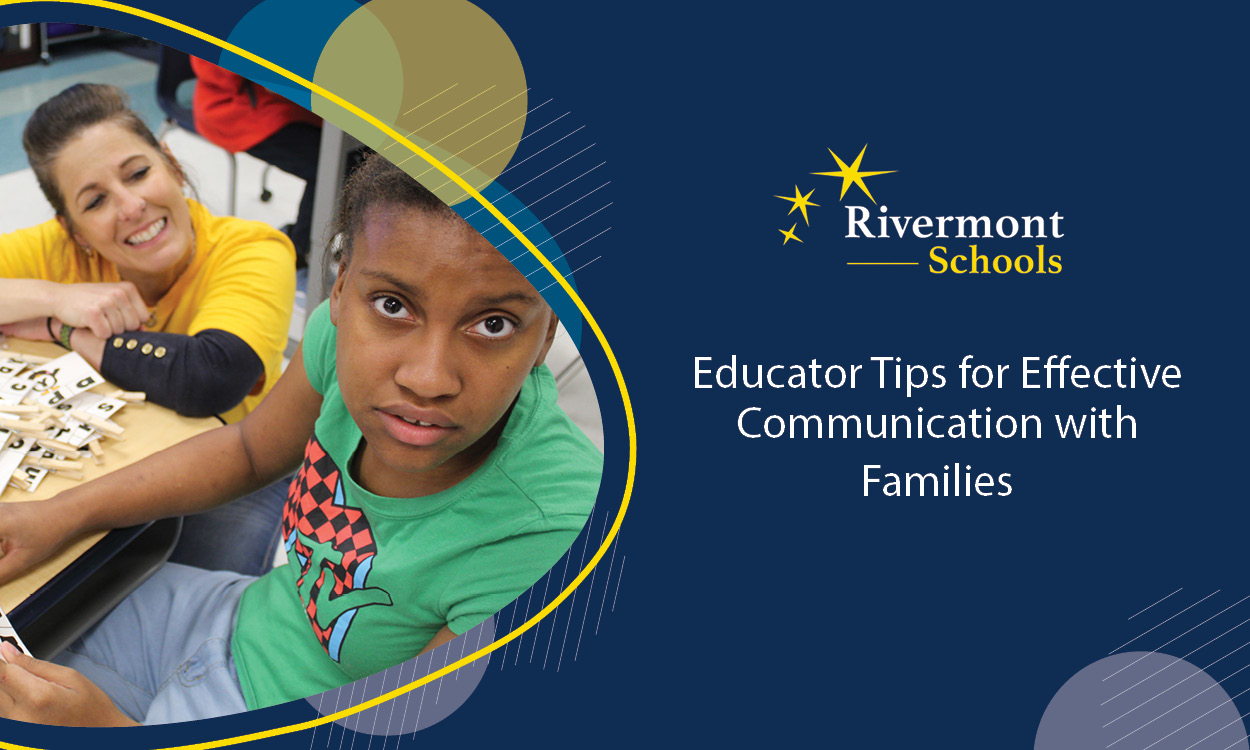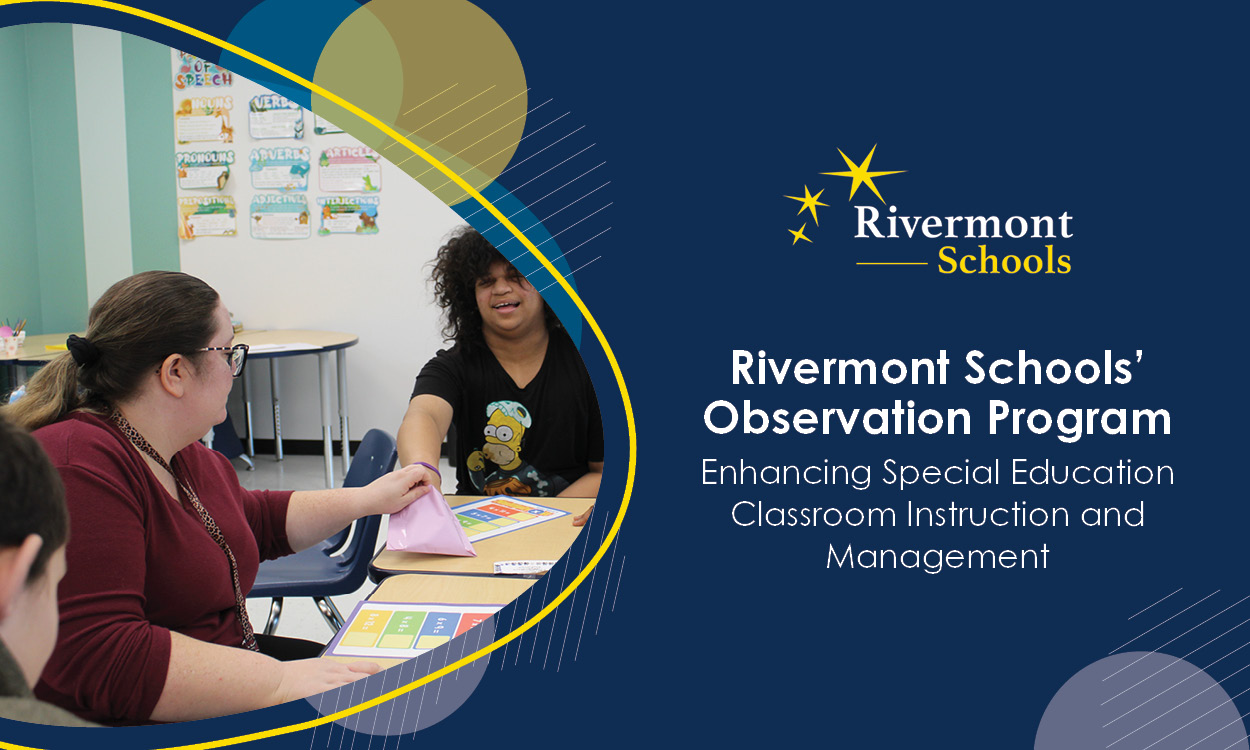Brain Breaks to Use at Home: Bringing Classroom Strategies to Your Living Room
Posted: October 18, 2024 | Written By: Sharmin Hossain | Category:

By Dr. Jackie Walker, Director of Curriculum, Instruction, and Assessment, Rivermont Schools
At Rivermont Schools, we’ve integrated effective brain breaks into our classroom routine, helping students with mental health or behavioral challenges stay engaged, reduce anxiety, and boost productivity. We’re excited to share some of these strategies so parents and guardians can implement them at home.
Why Brain Breaks Matter
Children—especially those dealing with anxiety, ADHD, mental health or behavioral health challenges—often need short, purposeful breaks throughout the day. Brain breaks help regulate emotions, manage stress, and restore focus. By incorporating these breaks at home, parents can better support their child’s mental health, enhance relationships, and create a more balanced atmosphere.
The Role of Brain Breaks in Supporting Learning
Incorporating movement breaks into the classroom has been shown to significantly improve students’ attention, behavior, and academic performance, particularly for students with special needs. Teachers who have used these techniques noted that brain breaks helped students regulate their energy, leading to better focus and increased engagement in academic activities.
These positive effects are why we recommend bringing these same brain breaks into the home environment. When children are feeling restless or struggling to concentrate, a quick movement break can help them reset and feel ready to learn again.
Below, learn about practical brain break resources, practiced in Rivermont’s classrooms, that you can use right in your living room.
1. Daily Calendar Activities: Engage with Monthly Themes
One of the tools used in our classrooms is a monthly brain break calendar that includes daily activities such as icebreaker questions, jokes, inspiring quotes, challenges, and goal-setting exercises. These activities demonstrate the monthly themes or milestones that are meaningful for students, such as the start of a new season, a holiday, or an important historical event. It is a great opportunity to learn and reflect!
Example Activities to Try:
- Icebreaker Questions: Use a question like, "If you could have any superpower, what would it be?" to spark conversation.
- Daily Challenges: On a day focused on gratitude, challenge your child to write down three things they are thankful for.
- Fun Facts and Jokes: Use themed jokes to add some humor. A joke about spring could be: "What season is best to jump on a trampoline? Spring-time!" Laughter is a wonderful way to relieve stress.
These activities are simple to carry out and offer moments of connection. As a parent or guardian, dedicating just 5-10 minutes a day to an activity like this can strengthen your relationship with your child and create positive shared experiences.
2. Printable Brain Break Cards: Quick Ways to Refocus and Relax
Another resource available is a set of printable brain break cards with 90 different ideas that can be used at home or in the classroom. The cards offer a variety of activities, ranging from mindfulness practices to quick movement exercises. They’re perfect for those moments when your child needs a quick reset or when transitioning between tasks.
Sample Brain Break Cards:
- 5-4-3-2-1 Sensory Exercise: Ask your child to identify five things they see, four things they hear, three things they can feel, two things they can smell, and one thing they can taste. This activity helps ground anxious minds and bring attention to the present.
- Mindful Breathing: Guide your child in deep breathing for one minute—inhale for four counts, hold for four, and exhale for four. This can help reduce stress and improve focus.
- Dance Break: Put on a favorite song and encourage your child to dance for two minutes. It’s a fantastic way to release built-up energy, especially after a challenging activity.
These cards allow you to be adaptable. For instance, if you see that your child is becoming overwhelmed during homework, pulling out a card that encourages deep breathing or a brief movement activity can be helpful.
3. Community-Building Activities for Bonding Time
In addition to brain breaks that focus on individual calmness, we’ve also developed community-building activities that help students connect with each other and their environment. These activities are perfect for fostering family connections at home.
Suggested Activities:
- Spot the Differences: Print or use a digital slide deck of two similar pictures with subtle differences. Sit together as a family and find the differences. Not only does this help with focus, but it also encourages teamwork.
- Snowball Toss: This can be easily adapted at home using wadded-up paper balls. Divide the family into two teams and see who can "collect" the most snowballs by tossing them into a target. It’s an easy way to laugh and play together, breaking the monotony of daily routines.
- This or That: Ask a series of questions with two options, such as "Do you prefer beach vacations or mountain vacations?" These prompts can reveal interesting things about your child, build empathy, and create shared understanding.
The Impact of Movement Breaks on Attention and Behavior
In a 2020 study conducted with special education teachers, using movement breaks was found to significantly improve students' attention, behavior, and academic performance. Teachers noticed fewer behavior issues and improved student engagement when movement breaks were integrated into the school day.
Many of the teachers also emphasized that movement breaks should be a core part of their instructional day due to their benefits. For parents, this means that incorporating simple movement breaks at home—like a quick stretching exercise or a playful dance-off—can help manage your child's energy, keep them focused, and support positive behavior. These breaks aren’t just fun; they actively contribute to better learning and emotional regulation.
Tips for Effective Brain Breaks at Home
- Keep it Short and Sweet: Aim for 3–5 minute breaks when your child needs a reset. For more involved activities, such as community games, 10-15 minutes is often plenty.
- Observe and Adapt: If a particular brain break doesn’t seem to work for your child, try another one. Some kids prefer movement-based breaks while others may thrive with quiet mindfulness exercises.
- Incorporate Themes: Use holidays or seasons as a way to add variety to brain breaks. For instance, during winter, activities like "Winter Magnetic Poetry" (drag-and-drop themed words to create silly phrases) can bring festive fun into the home.
Bringing classroom-tested strategies into your home doesn’t have to be complicated. By using tools like our monthly calendar, brain break cards, community-building activities, and other brain breaks, you can help your child manage stress, stay engaged, and feel more supported at home.
Learn more about how Rivermont Schools is supporting students and families with effective, adaptable strategies for mental health here.










